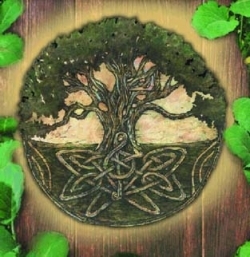~ Pagan Hare
Introduction to Paganism
Pagans may be trained in particular traditions or they may follow their own inspiration. Paganism is not dogmatic. Pagans pursue their own vision of the Divine as a direct and personal experience.
The Pagan Federation recognizes the rich diversity of traditions that form the body of modern Paganism. In a brief introductory booklet, it is not possible to describe each and every one. Rather than attempt this, the pages in this section - links are on the left hand side of this page contain an introduction to six examples of major Pagan traditions.
This is not an exhaustive list, but these six traditions provide a good overview of modern Pagan practice. A suggested reading list is also available.
Some authors see the emergence of Paganism in the twentieth century as a revival of an older Pagan religion and describe all the above traditions as Neo-Pagan.
This term is also used to describe all those who are recognisably Pagan, but who do not adhere to any of the above traditions per se.
A definition of a Pagan:
A follower of a polytheistic or pantheistic nature-worshipping religion.
A definition of Paganism:
A polytheistic or pantheistic nature-worshipping religion.
What Paganism Is
Paganism is the ancestral religion of the whole of humanity. This ancient religious outlook remains active throughout much of the world today, both in complex civilisations such as Japan and India, and in less complex tribal societies world-wide. It was the outlook of the European religions of classical antiquity - Persia, Egypt, Greece and Rome - as well as of their "barbarian" neighbours on the northern fringes, and its European form is re-emerging into explicit awareness in the modern West as the articulation of urgent contemporary religious priorities.
The Pagan outlook can be seen as threefold. Its adherents venerate Nature and worship many deities, both goddesses and gods.
Nature - Veneration
The spirit of place is recognised in Pagan religion, whether as a personified natural feature such as a mountain, lake or spring, or as a fully articulated guardian divinity such as, for example, Athena, the goddess of Athens. The cycle of the natural year, with the different emphasis brought by its different seasons, is seen by most Pagans as a model of spiritual growth and renewal, and as a sequence marked by festivals which offer access to different divinities according to their affinity with different times of year. Many Pagans see the Earth itself as sacred: in ancient Greece the Earth was always offered the first libation of wine, although She had no priesthood and no temple.
